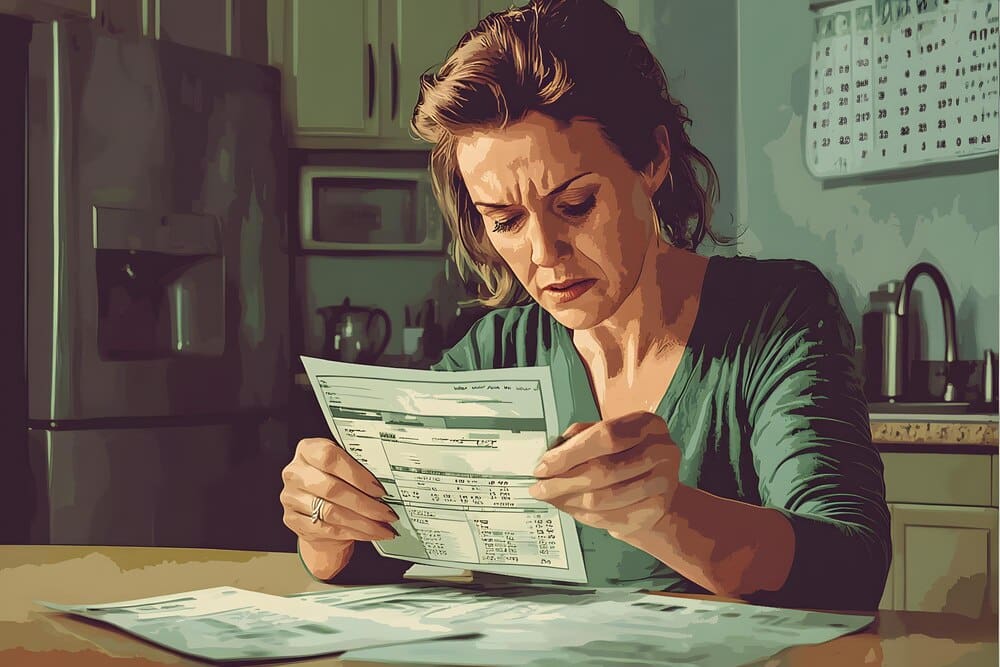For South Florida residents navigating one of the nation’s most expensive and competitive markets, a clean credit report is not just a financial document—it’s an essential tool for survival and growth. Errors on these reports, which are surprisingly common, can directly impact your ability to secure a mortgage in Miami, get a favorable auto loan in Fort Lauderdale, or even obtain affordable homeowners insurance in Palm Beach County. The critical first step for every consumer is to obtain their free annual credit reports from the three major bureaus—Equifax, Experian, and TransUnion—and meticulously review them for inaccuracies. By understanding how to identify and formally dispute these errors under federal law, Floridians can protect their credit scores, save thousands on interest payments, and gain a crucial advantage in a demanding economic landscape.
Why Your Credit Report Matters More Than Ever in South Florida
Living in South Florida presents a unique set of financial pressures. The region’s vibrant economy and desirable lifestyle come with a high cost of living, a fiercely competitive real estate market, and some of the highest insurance premiums in the country, often exacerbated by hurricane risk. In this environment, your credit score acts as a key that can either unlock opportunities or lock you out of them.
Lenders use your credit history to determine not only if you qualify for a loan but also the interest rate you’ll pay. A seemingly small error—like a payment mistakenly marked as late—could drop your score enough to push you into a higher interest bracket on a mortgage, potentially costing you tens of thousands of dollars over the life of the loan.
Furthermore, the influence of your credit report extends far beyond traditional lending. In Florida, insurance companies increasingly use a credit-based insurance score to set premiums for both auto and homeowners policies. A lower score, potentially caused by undetected errors, can lead to significantly higher annual insurance costs, adding another layer of financial strain for local families.
Even landlords in bustling areas like Brickell or Boca Raton rely on credit reports to vet potential tenants. A negative mark, accurate or not, could be the deciding factor that causes them to choose another applicant. Proactive credit management is no longer optional; it’s a fundamental component of financial health in the Sunshine State.
Breaking Down Your Credit Report: The Four Key Sections
To effectively spot errors, you must first understand the structure of your credit report. While the layout may vary slightly between Equifax, Experian, and TransUnion, all reports contain the same four core categories of information. It is crucial to check your report from all three bureaus, as a creditor may only report to one or two, meaning an error could exist on one report but not the others.
1. Personal Information
This section serves as your financial ID. It includes your name (and any variations), current and past addresses, Social Security number, date of birth, and sometimes your current and past employers. Errors here can range from simple misspellings to more serious red flags for identity theft, such as addresses where you’ve never lived.
2. Credit Accounts (Tradelines)
This is the heart of your credit report and where most costly errors occur. It provides a detailed history of your credit usage, listing every mortgage, auto loan, student loan, and credit card you have. Each account, or “tradeline,” includes the creditor’s name, the date the account was opened, your credit limit or loan amount, the current balance, and your payment history for the past several years.
Common errors in this section include accounts that aren’t yours, closed accounts being reported as open, incorrect balances or credit limits, and—most damagingly—payments that were made on time being incorrectly reported as 30, 60, or 90 days late.
3. Credit Inquiries
This section logs every time a third party accesses your credit file. These inquiries are categorized into two types, and it’s important to understand the difference.
Hard Inquiries vs. Soft Inquiries
A hard inquiry occurs when you actively apply for new credit, such as a mortgage, car loan, or credit card. These inquiries can cause a small, temporary dip in your credit score. An error to watch for is a hard inquiry from a lender you never contacted, which could be a sign that someone is trying to open fraudulent accounts in your name.
A soft inquiry happens when you check your own credit, or when companies access it for pre-approved offers. These do not affect your credit score. Potential employers or landlords may also perform soft inquiries with your permission.
4. Public Records and Collections
This section contains derogatory public information that can severely damage your credit score. This includes bankruptcies, tax liens, civil judgments, and accounts that have been sold to a collection agency. An error here—such as a paid collection account still showing a balance or a bankruptcy remaining on your report longer than the legally allowed 7-10 years—can be devastating to your financial standing.
How to Secure Your Free Credit Reports
The federal government has mandated a single, centralized source for consumers to access their credit reports safely and for free. You are entitled to one free report from each of the three major credit bureaus every 12 months.
The official website is AnnualCreditReport.com. Be extremely cautious of look-alike websites with similar names that may try to sell you unnecessary services. You can request your reports online for immediate access, or you can request them by phone or by mailing a request form available on the site.
Notably, due to economic shifts, the bureaus have extended a pandemic-era policy allowing consumers to access their full reports for free on a weekly basis. This is an invaluable tool for anyone actively working to clean up their credit or monitor for fraud.
The Formal Dispute Process: A South Floridian’s Action Plan
Once you’ve identified an error on your report, federal law—specifically the Fair Credit Reporting Act (FCRA)—gives you the right to dispute it. The burden of proof is on the credit bureau and the creditor to prove the information is accurate. If they cannot, it must be removed.
Step 1: Gather Your Evidence
Before filing a dispute, collect any documentation that supports your claim. This could include canceled checks or bank statements showing a payment was made on time, a letter from a creditor confirming an account has been paid in full, or a police report if you are a victim of identity theft. Organization is key.
Step 2: File a Dispute with the Credit Bureau(s)
You must file a separate dispute for each error with each credit bureau that is reporting it. You can typically do this online through their dispute portals, over the phone, or by mail. For the strongest legal standing and a clear paper trail, financial experts strongly recommend sending your dispute via certified mail with a return receipt requested.
Your dispute letter should be clear and concise. Include your personal identifying information, clearly state which item you are disputing (provide the account number), explain exactly why it is incorrect, and formally request its removal or correction. Be sure to include copies—never originals—of your supporting documents.
Step 3: Notify the Creditor (The Furnisher)
While the credit bureau is required to notify the company that supplied the information (the “furnisher”), it is also a wise strategy to send a similar dispute letter directly to the creditor. This ensures they are aware of the dispute and legally obligated to conduct their own internal investigation.
Step 4: The Investigation and Follow-Up
Under the FCRA, credit bureaus generally have 30 days (or 45 in some cases) to investigate your claim. Once the investigation is complete, they must provide you with the results in writing and a free copy of your updated credit report if a change was made. If your dispute is rejected, they must provide a reason.
When a Dispute is Denied: Your Next Steps
If the credit bureau or furnisher insists the information is correct and denies your dispute, you still have options. First, you have the right to add a 100-word “statement of dispute” to your credit file. This statement will be included any time your report is pulled, allowing you to explain your side of the story to future lenders.
For a more powerful recourse, you can file a complaint with the Consumer Financial Protection Bureau (CFPB). The CFPB is a federal agency that acts as a powerful consumer watchdog, and it will forward your complaint to the company and work to get a response. Many consumers find success after escalating their issue to the CFPB.
Finally, if the error is causing significant financial harm and you’ve exhausted other options, you may consider consulting an attorney who specializes in the FCRA. Many of these attorneys work on a contingency basis, meaning you don’t pay unless they win the case for you.
Protecting Your Financial Future
In the high-stakes financial environment of South Florida, your credit report is one of your most valuable assets. Regularly monitoring it for errors is not just a tedious chore; it is a critical act of financial self-defense. By taking the time to understand, review, and correct your credit reports, you empower yourself to secure the best possible terms on loans, lower your insurance costs, and build a stronger, more resilient financial future.







